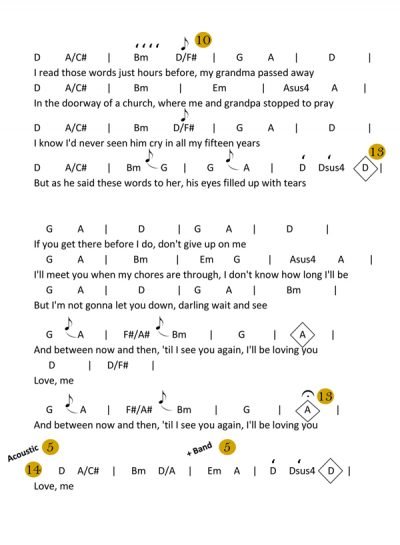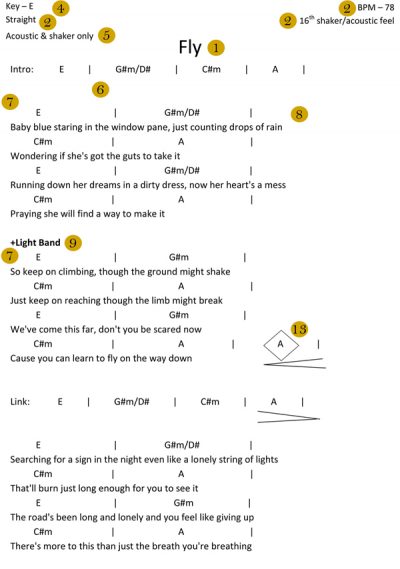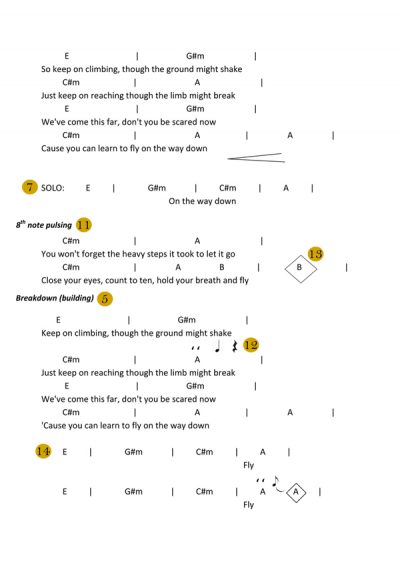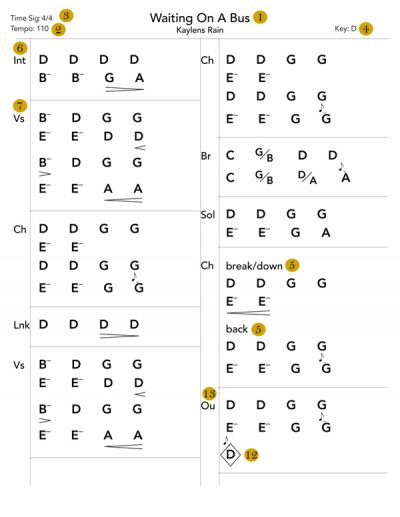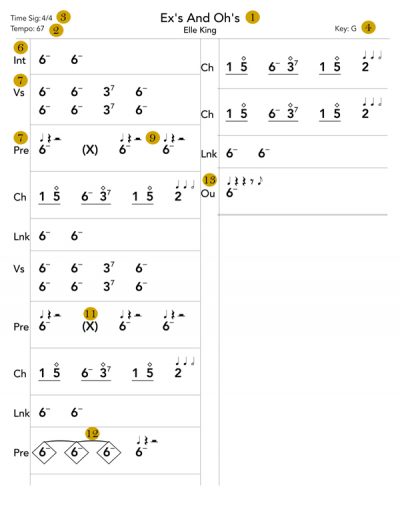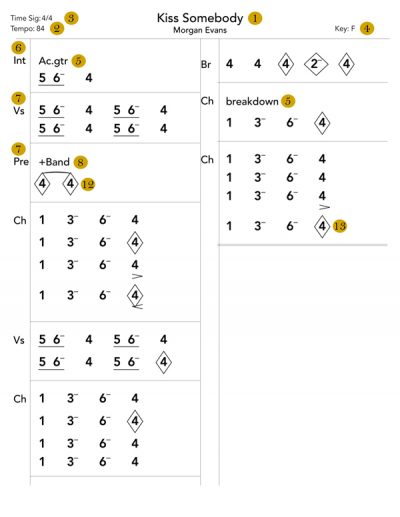Charts
Well written charts are integral for the band to be able to play your song correctly. All charts must include enough information that the band can read it quickly, and play it efficiently on the fly.
Below are three styles of charts that are standard across country music. Please note, the Nashville number system charts can be used for our Expo band only, not the Homestead concert band.
We have provided a handy key of what information should be present on a good chart.
**No ‘capo’ charts will be accepted unless asked by a band member specifically to provide one.
Key To Charts
LYRIC CHARTS
- Title
- Tempo/Feel
- Time signature
- Key
- Instrumentation
- Intro
- Sections
- Even bar spacing (e.g. 4 bars per line)
- Band entry point
- Rhythmic notation
- Specific rhythmic devices/motifs
- Stops
- Holds
- Outro/Ending
NUMBER/CHORD CHARTS
- Title
- Tempo/Feel
- Time signature
- Key
- Instrumentation
- Intro
- Sections
- Band entry point
- Rhythmic notation
- Specific rhythmic devices/motifs
- Stops
- Holds
- Outro/Ending


